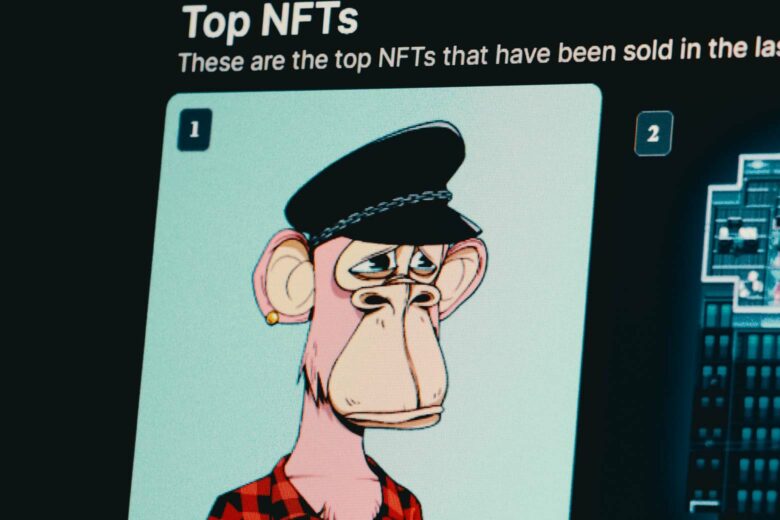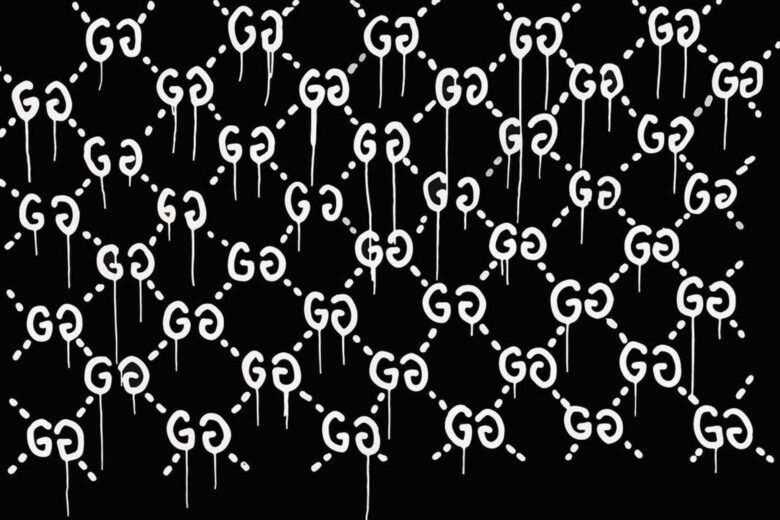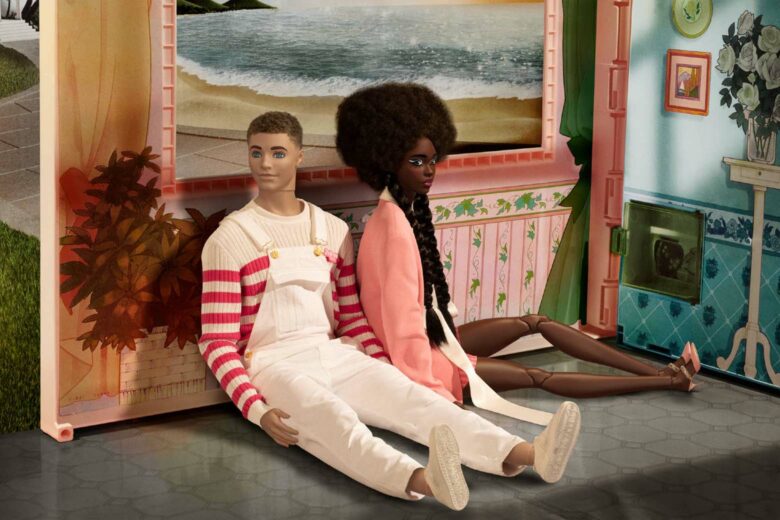Whether it’s pictures of apes being sold for $10 million or tweets valued at $3 million, there is a never ending list of jaw dropping headlines relating to lucrative NFTs. So much so, that even the least-crypto-savvy of us are considering opening an Ethereum wallet. But before you put your life savings into a digital kitten or a Beeple video, let’s dig—or mine—deeper into the NFT meaning.
In this article we’ll discuss what NFTs are, how they work, as well as how NFTs can be leveraged as a marketing tool for luxury brands.
Check our definitions of blockchain and token gating to learn more about these related concepts.
NFT definition: What is an NFT? What does an NFT stand for?
An NFT (non-fungible token) is a digital entity that cannot be replaced, substituted or subdivided. Non-fungible tokens are tokenized on the blockchain and assigned unique identification codes. This metadata distinguishes each token from every other token, assigning it a unique value.
In order to understand why this is special, you have to understand fungibility. Something is fungible if it can be substituted by something of equal value. For example, a one dollar bill is fungible because it can be substituted with another one dollar bill without the value of the asset changing.
An NFT, on the other hand, is not fungible, which means that it can never be replaced by something that is considered to be exactly the same value. Think of the Mona Lisa. Although it can be copied and printed multiple times, those copies do not hold the same value as the original painting.
In the same way, digital art, videos and music can be replicated, but an NFT means that the original is afforded a unique value and can only be owned by one person.
NFT process: how NFTs work
As the new kid on the block(chain)—sorry, we had to—understanding the NFT process can be pretty confusing and daunting. Firstly, NFTs are created through a process called minting. The whole idea behind NFTs is validation, therefore this process is simply a way to assign ownership and manage transferability through smart contracts that live in the blockchain.
Essentially, minting creates a new block on the blockchain. This “block” contains the specific validated information and is closed so that no new information can be added. That “block” has a unique address in the blockchain, which can only be accessed by the owner of the NFT. Each NFT can only have one owner, which is made publicly available and trackable on the blockchain. This gives owners pride in owning the original information (just like you would have if you had the real Mona Lisa hanging in your living room for everyone to see).
Once an NFT is created and verifiable on the blockchain, it can then be transferred, usually in exchange for cryptocurrency. Cryptocurrency also uses blockchain technology and is therefore considered a secure medium for transactions in the digital economy. Similar to objects in the real world, the value of NFTs can increase or decrease depending on demand.
What can you do with an NFT?
No, NFTs aren’t just a trading playground for the mega rich—although that is certainly one use case—there are many utility examples of NFTs, with tokengating and loyalty programs being amongst the most common for luxury brands. Tokengating is the process whereby brands provide exclusive access to events, content, deals or merchandise to specific NFT-holders. Kings of Leon did this when they released NFTs allowing holders front row seats for life. And Gucci hosted exclusive cocktail parties for their NFT holders during their most recent Fashion Weeks.
On the other hand, many NFT loyalty programs use NFTs as a reward to unlock future benefits. The Starbucks Odyssey is a good example of this. On the blockchain-based loyalty program, Starbucks customers can earn NFTs by buying coffees, watching videos, taking quizzes or playing puzzles.These NFTs are linked to real life experiences such as exclusive espresso making classes or Starbucks merchandise.
Benefits
- For artists: NFTs allow artists to retain rights to their content.
- For buyers: NFTs can unlock exclusive experiences or products and can potentially appreciate in value.
- For brands: NFTs provide new marketing opportunities for brands.
Risks
- Fake NFTs: scam artists can impersonate famous artists and sell fake NFTs with very little intrinsic value.
- Irrelevant blockchains: some blockchains might not always be used, meaning that your NFT would lose its value.
- Dishonest platforms: not all platforms respect royalty rules, meaning that artists don’t always continue to earn from their works.

Most popular NFTs
Digital NFT art and NFT collectibles are the most popular and probably the most well-known examples of NFTs. From the internet-breaking Crypto Kitties NFT to the famous Bored Ape NFT, many of the most expensive NFTs have proved to be great investments. But investing in NFTs goes beyond taking ownership of digital art. Most highly sought-after NFT collectibles unlock exclusive benefits—such as events, videos or merchandise to NFT holders.
Digital art NFTs and NFT collectibles are the most widely known examples of non-fungible tokens, but they aren’t the only ones. Other popular NFTs include music NFTs, video game NFTs, virtual fashion NFTs and domain name NFTs. Even sporting moments are being turned into NFTs—yep, an NBA shot featuring a Lebron James slam dunk sold for nearly $400,000. NFTs are also becoming more popular on social media platforms. NFTs on Instagram are case in point. By simplifying the onboarding process and expanding the creator’s reach, the social media platform is bringing more people into the world of NFTs.
How can luxury brands use NFTs?
What do NFTs mean for the future of luxury? At the forefront of luxury future trends, NFTs are used by brands to create a sense of loyalty and community.
Marketing Strategies
Brand awareness, loyalty, exclusivity and scarcity are distinctive characteristics of luxury brands, so it makes sense that non-fungible tokens can be used to achieve this.
Access to digital experiences
NFTs can be used to unlock digital services such as videos, games and various other forms of content. How can this be used as a marketing strategy? Well, luxury brands could reward brand loyalty with digital content. This leads to endless opportunities for more exciting loyalty programs. Now instead of merely collecting stamps to obtain a free coffee, you can collect NFTs to obtain access to unique digital experiences, such as videos, games or online courses.
Personalizing experiences
As well as using NFTs to unlock exclusive digital experiences, NFTs can also be used to personalize digital experiences. Wearables and digital fashion in video games are a good example of personalizing digital experiences with NFTs. In this case, luxury brands can use personalized experiences to make their customers feel independently seen and heard, creating an increased sense of trust.
Develop strong communities
The most popular blockchain marketing strategy used by luxury brands is leveraging NFTs to develop strong communities. By allowing customers to play an active role in the brand, customers are likely to feel a greater sense of loyalty as part of the ecosystem. A good example of this is offering participating customers exclusive access to limited edition products, events and services.
Marketing Applications
Here are the most popular tools used to implement those strategies.
Proof of attendance tokens
Proof of attendance NFTs are used to prove that you attended a specific event—kind of like a badge earned to immortalize the moment. Proof of attendance NFTs can be used for any event—from online classes to iconic concerts. And when it comes to marketing strategies for luxury brands, proof of attendance tokens are great for rewarding milestones, keeping track of attendance or gifting souvenirs to attendees.
Soulbound tokens
Similar to a digital CV, soulbound tokens indicate a person’s social status online. Soulbound NFTs are bound to a specific wallet for life and every wallet address (or soul) is then made public to all other blockchain users. As non-transferable tokens, they represent a person’s identity. But they can also be used by luxury brands to offer non-transferrable exclusive benefits to loyal customers.
Dynamic NFTs
Dynamic NFTs change their benefits under certain conditions. Imagine a clothing garment that changes its form according to the weather forecast. Similarly, dynamic NFTs can be used to offer holders the best possible experience at a specific point in time. Capitalizing on this latest blockchain technology luxury brands could use dynamic NFTs to remain relevant in ever-changing circumstances.
NFTs for luxury brands case studies
Guccighost NFT

The Guccighost NFT is indicative of how the luxury fashion house is changing with the times and leveraging NFTs as a marketing strategy. Guccighost started in 2012 when street artist, Trevor Andrew, duped the luxury brand by borrowing its double-G logo to create a Guccighost halloween outfit. Relentlessly, he continued to use the logo for his graffiti-style art until the creative director at Gucci reached out and pitched a collaboration.
Instead of suing Trevor Andrew, Gucci recognized the potential of a Guccighost NFT auction. The online auction broke the internet, with the entire collection selling within 12 seconds. The digital art continues to sell for over $3 million. And as it does so, it emphasizes the timeless relevance of one of the most popular luxury brands.
Balmain x Barbie NFT

In 2022, Balmain also became a brand on the blockchain with its release of the Balmain Barbie NFT. Raising positive brand awareness, the Balmain Barbie NFT collection reflects diversity and inclusivity. And at the same time, it promotes the brand’s capsule collection. By dressing the online Barbie dolls in the same apparel that it would eventually release in reality, the NFT project marries futuristic technology with the brand’s timeless appeal. As one of the most talked about NFTs, the Balmain Barbie NFT attracted a younger market as it showcased the luxury brand’s willingness to adapt to the times and stay ahead of the curve.
Bentley Genesis NFT

With a one-time NFT drop of just 208 pieces, Bentley also ventured into the NFT marketplace. The Genesis NFT is a unique artwork created by Bentley Design. However, the real value of the token lies in its ability to unlock exclusive rewards, such as access to elite events. Creating a community of like-minded Bentley fans, the project solidifies the relationship between the brand and its consumers.
With a commitment towards carbon-neutrality, Bentley is also one of the most sustainable luxury car brands—a point emphasized by the brand’s eco-friendly NFT release. As well as using the project to promote the brand’s sustainability, it also used it as an opportunity to advertise the brand’s philanthropic efforts. All proceeds from the NFT auction were donated to the brand’s social efforts. And as the NFTs continue to be traded, proceeds will continue to be donated.
Louis the Game

In August 2021, Louis Vuitton launched Louis the Game to celebrate the founder’s 200th birthday. The online game portrays Louis Vuitton as a 14 year old boy and the journey he took to establish the now-iconic luxury label. As players travel through the game, they are encouraged to collect monogrammed candles and keys, as well as 10 NFTs which have been embedded into the game.
Although the NFTs cannot be sold, they are used very effectively to raise brand awareness and tap into a younger audience. Used as an incentive to play the game, the NFTs can only be collected by playing Louis the Game. In this case, the aim of the brand is to draw consumers into the history of the brand and make them feel a part of it. Like many games, the mobile game is designed to be played with friends, who are all listed on the global leaderboard. This is a great example of how to create a sense of community with your brand at the center.
Our take on NFTs
Non-fungible tokens provide brands with unique opportunities to connect with their audience. From exclusive events to unprecedented perks, NFTs allow brands to reward loyalty and develop a strong sense of community.
With scarcity and brand awareness being key personality traits of any luxury brand, we expect that luxury brands will be able to benefit from NFTs. And although we’re still in the early stages and a lot of experimentation is needed for the format to find its place, there are many opportunities for how luxury brands can leverage NFTs as marketing tools.
Frequently asked questions about NFTs
An NFT (non-fungible token) is a digital entity that cannot be replaced, substituted or subdivided. Non-fungible tokens are tokenized on the blockchain and assigned unique identification codes. This metadata distinguishes each token from every other token, assigning it a unique value. Check our guide to blockchain to learn more about the technology.
An NFT is a non-fungible token. This means that it has a unique value which can never be replaced. NFTs are created through the process of minting. Essentially, minting creates a closed block on the blockchain containing specific validated information. This information is assigned a unique location and owner, which is made public to all other blockchain users. Read our simple definition of NFT to understand its meaning.
NFTs are akin to speculation rather than investment. While some projects saw significant price appreciation, not all NFTs are viable investments. Those profiting the most are most often creators and early investors in the project, rather than people buying and trading NFTs on second-markets.
Brands can use NFTs as powerful marketing tools to raise brand awareness and increase brand loyalty through token gating. Used to create a strong sense of community, NFTs can allow members exclusive access to events, merchandise or digital content. Similarly, NFTs can also be used to reward brand loyalty and to build a relationship between the brand and its customers.











